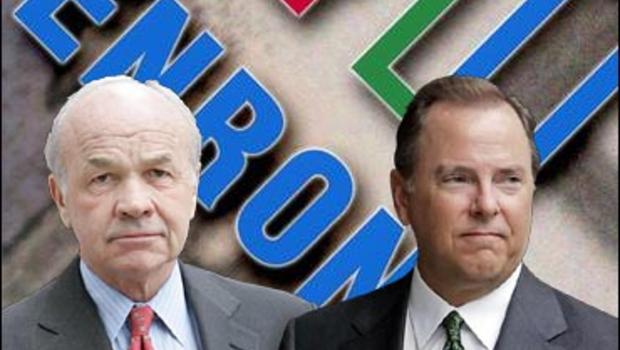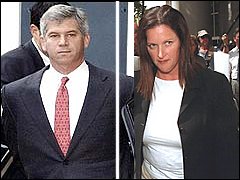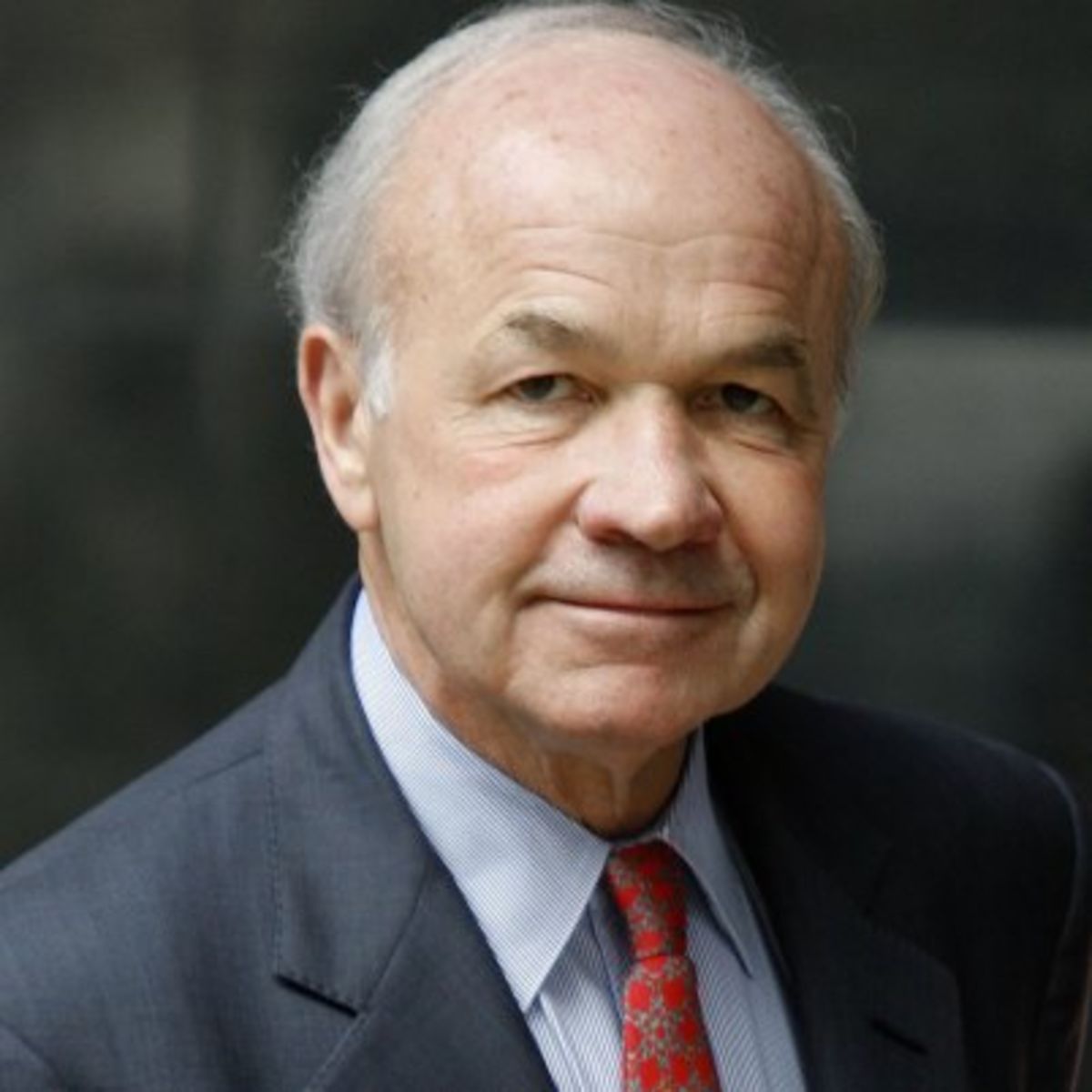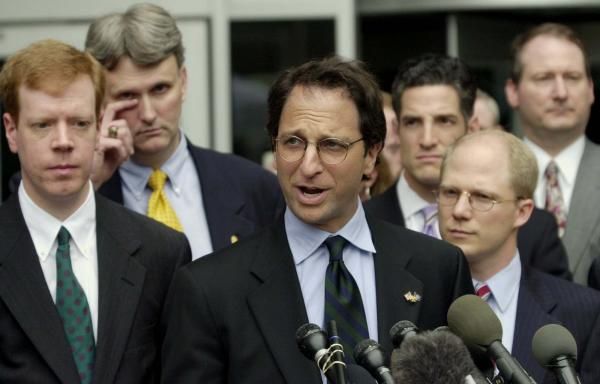
 Early last week, oral arguments were heard in the Fifth Circuit Court of Appeals on the appeal of the four Merrill Lynch executives who were convicted of wire fraud and conspiracy charges in November 2004 in the trial of the Enron-related case known as the Nigerian Barge case.
Early last week, oral arguments were heard in the Fifth Circuit Court of Appeals on the appeal of the four Merrill Lynch executives who were convicted of wire fraud and conspiracy charges in November 2004 in the trial of the Enron-related case known as the Nigerian Barge case.
Reports from those who attended the oral argument indicate that it went well for the appellants, but it may have gone even better had counsel for the Merrill Four known about former Enron CFO Andy Fastow’s testimony from this past Thursday afternoon in the ongoing criminal trial of former key Enron executives Ken Lay and Jeff Skilling.
The Enron Task Force contended in the Nigerian Barge case that the Merrill Four were guilty of conspiring with Enron executives to mislead Enron investors in connection with Merrill’s purchase of a dividend stream attributable to an ownership interest in some power-generating barges moored off the coast of Nigeria. On a threshold basis, the Task Force’s case against the Merrill Four was bizarre because it was Enron, not Merrill, that may have improperly accounted for the transaction, although even that issue was never proven at trial. For its part, Merrill was simply buying a relatively small asset that Enron wanted to sell in Merrill’s ongoing effort to ingratiate itself to a potentially good customer of Merrill’s investment banking services.

 The prosecution’s case against the Merrill Four rested almost entirely on the testimony of former Fastow henchmen, Michael Kopper and Ben Glisan, both of whom were deeply involved with Fastow in effectively embezzling money from Enron in connection with Fastow’s management of certain special purpose entities. Kopper and Glisan both testified on the key issue in the trial — i.e., that Fastow made during a December 1999 telephone call a legally unenforceable oral inducement to Bayly that Enron would either buy Merrill’s interest in the barges back or broker the interest to a third party, such as LJM2, an Enron SPE — despite the fact that neither Kopper nor Glisan participated in the telephone call. Inasmuch as Fastow’s oral inducement allegedly constituted a “hidden side deal” for Enron to “buy-back the barges,” the Task Force argued that Enron’s accounting of the transaction as a “true sale” was fraudulent and that the Merrill Four should have known that, so they were guilty of conspiracy.
The prosecution’s case against the Merrill Four rested almost entirely on the testimony of former Fastow henchmen, Michael Kopper and Ben Glisan, both of whom were deeply involved with Fastow in effectively embezzling money from Enron in connection with Fastow’s management of certain special purpose entities. Kopper and Glisan both testified on the key issue in the trial — i.e., that Fastow made during a December 1999 telephone call a legally unenforceable oral inducement to Bayly that Enron would either buy Merrill’s interest in the barges back or broker the interest to a third party, such as LJM2, an Enron SPE — despite the fact that neither Kopper nor Glisan participated in the telephone call. Inasmuch as Fastow’s oral inducement allegedly constituted a “hidden side deal” for Enron to “buy-back the barges,” the Task Force argued that Enron’s accounting of the transaction as a “true sale” was fraudulent and that the Merrill Four should have known that, so they were guilty of conspiracy.
 Remarkably, the prosecution did not call either Fastow or anyone else who actually participated in the key December 1999 telephone call to testify during the trial of the Nigerian Barge case. Nevertheless, the Task Force represented to defense counsel for the Merrill Four that Fastow’s testimony in regard to the transaction was consistent with that of Kopper and Glisan. Based on that representation and the weakness of the prosecution’s case at trial generally, the defense team of the Merrill Four elected not to call Fastow as a witness during the trial. The jury convicted the Merrill Four, anyway.
Remarkably, the prosecution did not call either Fastow or anyone else who actually participated in the key December 1999 telephone call to testify during the trial of the Nigerian Barge case. Nevertheless, the Task Force represented to defense counsel for the Merrill Four that Fastow’s testimony in regard to the transaction was consistent with that of Kopper and Glisan. Based on that representation and the weakness of the prosecution’s case at trial generally, the defense team of the Merrill Four elected not to call Fastow as a witness during the trial. The jury convicted the Merrill Four, anyway.
With that backdrop, imagine the surprise of counsel for the Merrill Four when they heard about Fastow’s following testimony on cross-examination this past Thursday afternoon in the Lay-Skilling trial. After reading a portion of Kopper and Glisan’s testimony from the barge trial, Fastow testified as follows:
Q. Now, after having read through those pages [of Glisan and Kopper’s testimony], does that refresh your recollection at all about the events that transpired in December of ’99 concerning LJM[2] having been approached and what it did in response to that approach about these barges?
A. No, sir. They’re largely contradictory to my recollection of events.
Fastow went on to testify at some length on the barge transaction and contradicted key portions of both Kopper and Glisan’s testimony from the barge trial, such as the reason why LJM2 elected not to buy the interest in the barges at the time that Merrill bought the interest.
As noted earlier here (see also the thread here), this is not the first example of key testimony from prosecution witnesses in the Nigerian Barge trial being contradicted by testimony of prosecution witnesses in the Lay-Skilling trial. Meanwhile, four former Merrill Lynch executives sit in prison with their lives turned upside down based largely on testimony of prosecution witnesses that the Enron Task Force knew contradicted that of another key prosecution witness who the Task Force elected not to call.
The Department of Coercion, indeed.











